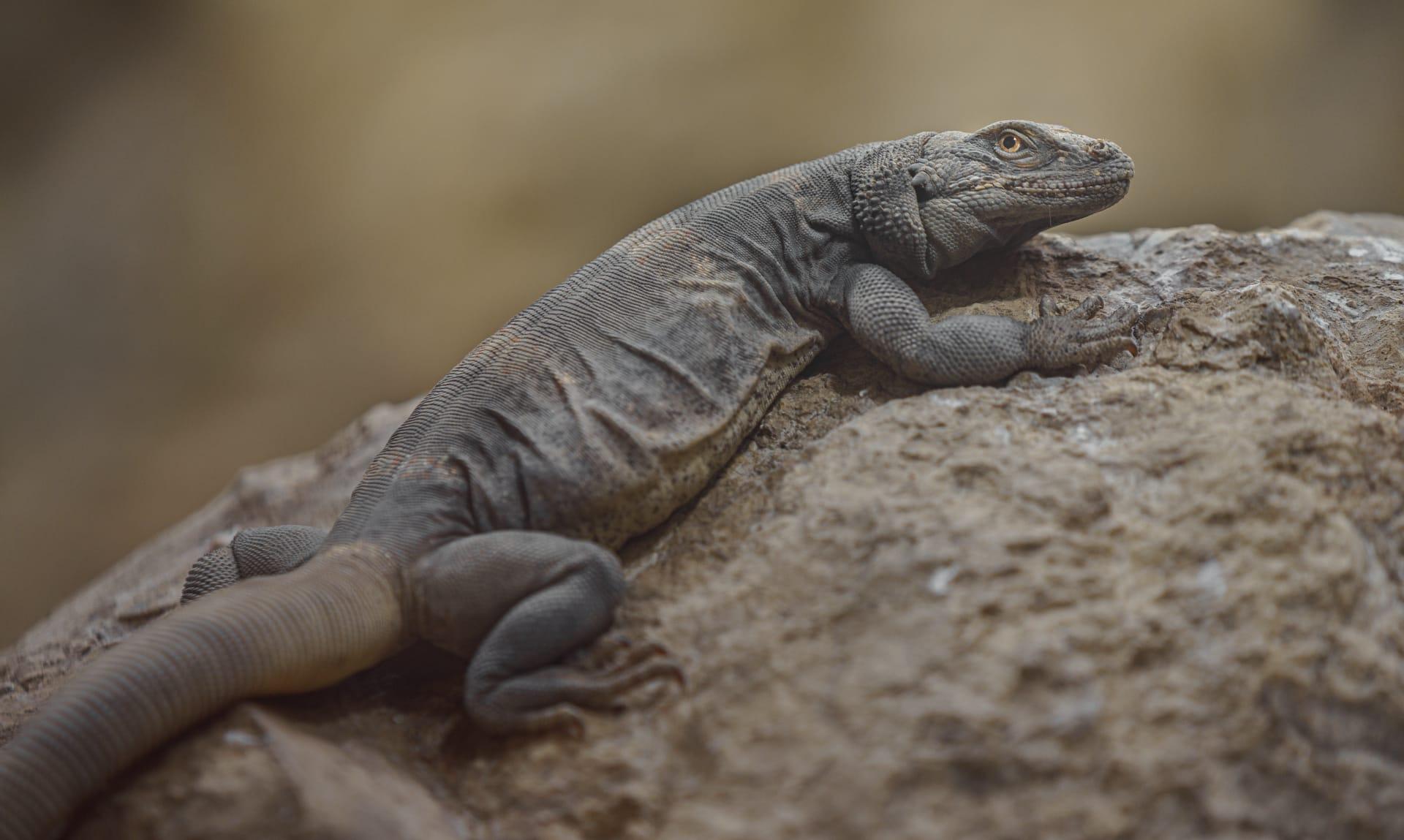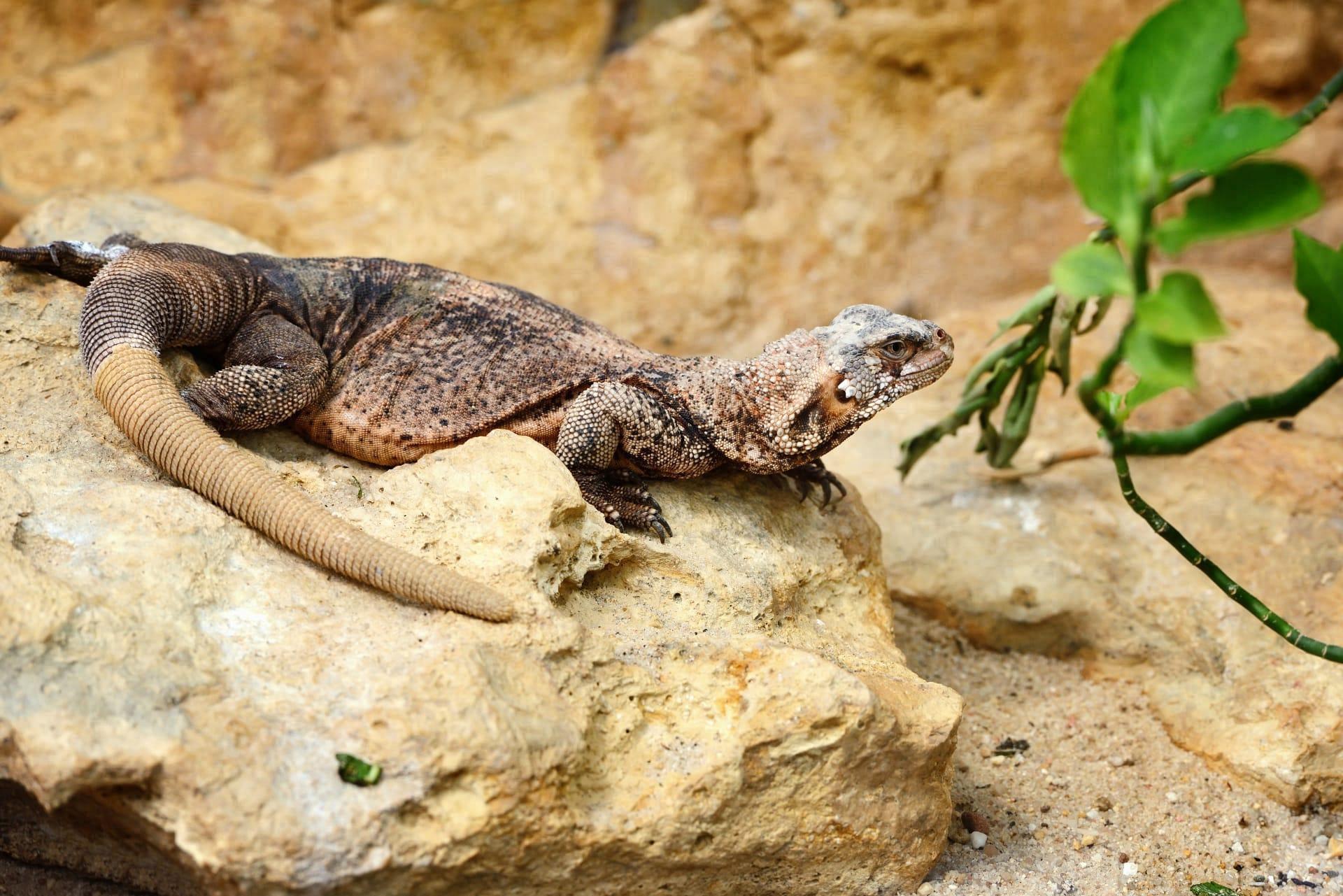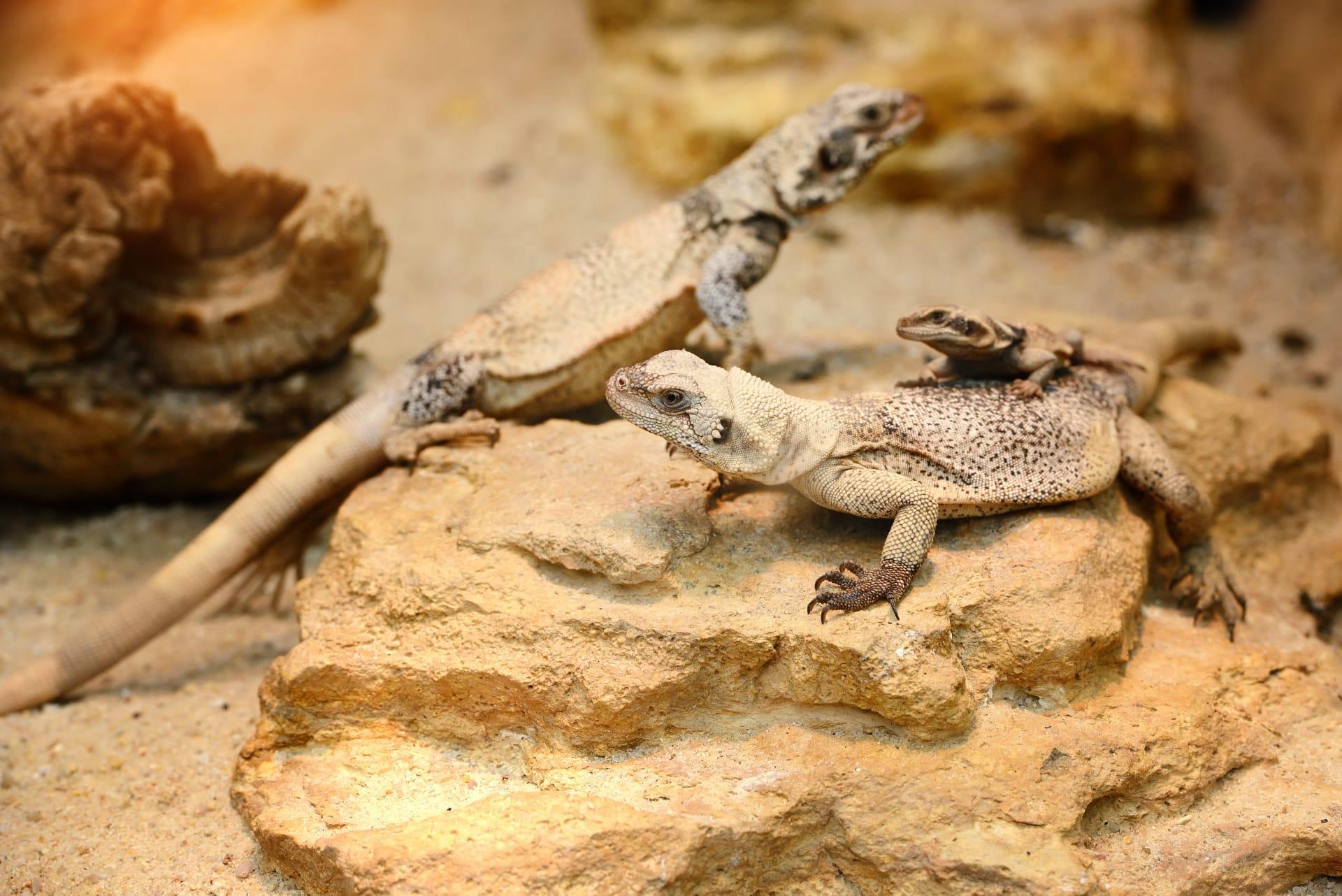American Chuckwalla
- Home /
- Mini Encyclopedia /
- Animal /
- American Chuckwalla
1
The American Chuckwalla, scientifically known as Sauromalus ater, belongs to the family Iguanidae, under the order Squamata. This species is part of the larger group of lizards, sharing characteristics with other iguanids but distinct in its robust body, small scales, and loose skin, particularly around the neck and shoulders. Its classification reflects an evolutionary path that highlights adaptation to arid environments and a herbivorous diet.
Primarily found in the southwestern United States and northern Mexico, the American Chuckwalla's habitat ranges across diverse arid regions. They are especially prevalent in rocky desert areas, where their camouflage and rocky crevices provide both protection and basking spots. These lizards are mostly seen in the Mojave, Sonoran, and Colorado deserts. Their distribution is influenced by environmental factors like temperature, availability of vegetation, and shelter, leading to a somewhat patchy but still significant presence across these arid landscapes.

2
Question: Do American Chuckwallas pose a danger to humans?
Answer: Contrary to some beliefs, American Chuckwallas are not dangerous to humans. They are generally docile and are more likely to flee or hide in rock crevices when threatened. Their primary defense mechanism is inflating their bodies in tight spaces to avoid predation. While they can grow quite large - up to 20 inches in length - they are herbivores, primarily feeding on leaves, fruits, and flowers. Their intimidating appearance, with loose folds of skin and robust size, often leads to misconceptions about their nature, but they pose no threat to people.

3
The American Chuckwalla employs several survival strategies unique to its arid environment. One key adaptation is its ability to regulate body temperature through behavioral thermoregulation. They bask in the sun to warm up and retreat into cooler crevices when necessary. Their skin color can change slightly to optimize heat absorption or reflection. Another survival tactic is their diet - primarily herbivorous, they consume various desert plants, which provide both nutrition and hydration. This diet is crucial in habitats where water is scarce.
Additionally, their loose skin plays a role in defense; when threatened, a Chuckwalla can wedge itself into a narrow rock crevice and inflate its body to prevent predators from extracting it. Their reproduction strategy is also adapted to the harsh environment. Females lay eggs in burrows, which are insulated from extreme temperatures, ensuring higher survival rates for their offspring. This combination of behavioral, physiological, and reproductive adaptations allows the American Chuckwalla to thrive in challenging desert ecosystems.

4
In the ecosystem, the American Chuckwalla plays a significant role as both a consumer and prey. As herbivores, they help in controlling the growth of certain desert plants, contributing to the ecological balance. Their foraging habits can influence the distribution and abundance of plant species in their habitat. This interaction is vital for maintaining the health of arid ecosystems, where plant life is a crucial component of the food web.
As prey, Chuckwallas are important in the food chain, serving as a food source for a variety of predators, including birds of prey, larger mammals, and snakes. This predatory pressure influences their behavior and habitats, leading them to develop effective camouflage and hiding strategies. The presence of Chuckwallas can thus be an indicator of the health of the desert ecosystem, reflecting the balance between predator and prey populations and the overall biodiversity of the region.

5
Film: "Desert Giants: The World of American Chuckwallas" is a documentary produced in the United States in 2019. It explores the life and habitat of the American Chuckwalla, delving into their survival strategies, dietary habits, and the challenges they face in the desert ecosystem. The film provides a comprehensive look at these creatures within the broader context of the arid landscapes they inhabit.
Book: "Lizards of the American Southwest," published in the United States in 2008 by authors Lawrence Jones and Robert Lovich, provides an extensive overview of various lizard species, including the American Chuckwalla. It discusses their biology, behavior, and habitat, offering insights into the ecological significance of these reptiles in the Southwest region.
Book: "Desert Life: Reptiles and Amphibians," authored by James Cornett in 2012, is another significant work from the United States. This book delves into the adaptations and survival strategies of desert-dwelling reptiles, including the American Chuckwalla. It provides a detailed account of how these animals have evolved to thrive in some of the most inhospitable environments on Earth.